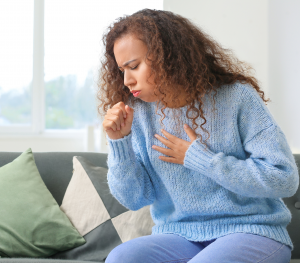
Your home is your refuge, place of comfort, and an environment that should provide shelter, safety, and health. However, the health and safety of your family could be compromised by the quality of the air in your home. It’s important to know the signs of dangerous, low-quality air to avoid dangerous, long-term health conditions caused by low-quality or polluted indoor air.
Volatile organic compounds (VOCs) from household chemicals, germs, mold, and spores are just a few of the airborne threats to your family’s health in the home environment.It’s important to remember that it isn’t only the very young, very old, or already sick members of the family that are affected. Airborne pollutants can either moderately or seriously affect the health of anyone, and the effects become worse over time.
The levels of these airborne threats are dependent on a few factors, which are also essential to understand.
Factors Affecting Air-Quality
The general condition and age of your home can affect air quality. Problems such as mold, mildew, and excess dust in the air are more prevalent in older homes. Poor ventilation plays a significant role too, which is especially difficult in winter. Pets can also affect air quality. Dander, fur, and other pollutants produced by our furry friends, especially in small unventilated areas, can seriously affect the health of your family. One of the biggest culprits for home air quality is VOCs. The use of household cleaning products and insect repellants has a detrimental effect on the air we breath and is especially dangerous to infants and children.
The 5 Signs Of Dangerous Low-Quality Indoor Air
Let’s look at 5 of the most serious signs that you need to improve your home air quality.
Flu-Like Symptoms
When your body tries to defend itself from unhealthy airborne contaminants, the symptoms are similar to that of a cold or flu. Constantly runny noses, itchy eyes, coughing, and sneezing are all signs that your body is trying to protect itself from airborne pollutants. Body aches, fatigue, and dizziness can also be present when the pollutant is particularly harmful. These causes include humidity, dust, pollen, bacteria and viruses, and mites, and the effects are made worse when there is poor ventilation in the home.
Asthma Symptoms
People living with Asthma are hit the hardest by low-quality indoor air, but non-asthmatics can also get mild asthma-like symptoms. Wheezing, a tight chest, difficulty breathing, and violent coughing are all symptoms that poor air quality can trigger in asthmatics. The causes of this include airborne particles, ozone, and endotoxins.
COPD
Chronic Obstructive Pulmonary Disease is a lung disease with close causal links to long-term exposure to poor quality air. The symptoms are similar to asthma but can also include weight loss, infection of the lungs, and swelling of the feet and legs. Avoidable air pollutants such as pollen, pet dander, mites, combustible pollutants, asbestos, radon, and secondhand smoke can all worsen COPD.
Lung Cancer
Many studies show a strong connection between long-term exposure to poor air quality and lung cancer. Airborne cancer triggers include volatile organic compounds, combustible pollutants, secondhand smoke, and radon. A clean and pure air environment at home can decrease the risk of lung cancer developing and improve the health of those living with lung cancer.
Cardiovascular Symptoms
Your cardiovascular health can also be affected by low-quality air at home, especially when there is prolonged exposure. Shortness of breath, chest pain, numbness, and various other symptoms are signs of cardiovascular problems and low-quality air at home. Should you or any members of your family develop severe symptoms, please consult a medical professional immediately for expert advice and treatment.
However, prevention is always better than cure, and one of the best ways to ensure clean and healthy household air is to use a UV light purification system.
Contact UVC Light Pros today to find out more!
